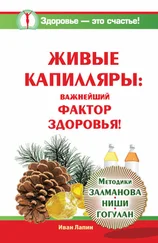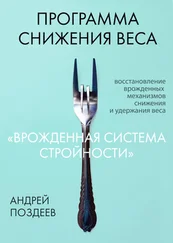120. Ngoc P. Ly, Augusto Litonjua, Diane R. Gold, Juan C. Celedón. Gut Microbiota, Probiotics, and Vitamin D: Interrelated Exposures Influencing Allergy, Asthma, and Obesity? J Allergy Clin Immunol. 2011 May; 127(5): 1087–1094
121. Les Dethlefsen, Sue Huse, Mitchell L Sogin, David A Relman. The Pervasive Effects of an Antibiotic on the Human Gut Microbiota, as Revealed by Deep 16S rRNA Sequencing. PLoS Biol. 2008 November; 6(11): e280
122. Dethlefsen L, Relman DA. Incomplete recovery and individualized responses of the human distal gut microbiota to repeated antibiotic perturbation. Proc Natl Acad Sci U S A. 2011 Mar 15;108 Suppl 1:4554–61
123. Penders J, Thijs C, Vink C, Stelma FF, Snijders B, Kummeling I, van den Brandt PA, Stobberingh EE. Factors influencing the composition of the intestinal microbiota in early infancy. Pediatrics 2006 Aug;118(2):511–21
124. Sharland M; SACAR Paediatric Subgroup. The use of antibacterials in children: a report of the Specialist Advisory Committee on Antimicrobial Resistance (SACAR) Paediatric Subgroup. J Antimicrob Chemother. 2007 Aug;60 Suppl 1:i15–26
125. McCaig LF, Besser RE, Hughes JM. Trends in antimicrobial prescribing rates for children and adolescents. JAMA 2002 Jun 19;287(23): 3096–102
126. Hersh AL, Shapiro DJ, Pavia AT, Shah SS. Antibiotic prescribing in ambulatory pediatrics in the United States. Pediatrics 2011 Dec;128(6): 1053–61
127. Barnett ML, Linder JA. Antibiotic prescribing for adults with acute bronchitis in the United States, 1996–2010. JAMA 2014 May 21;311(19):2020–2
128. Barnett ML, Linder JA. Antibiotic prescribing to adults with sore throat in the United States, 1997–2010. JAMA Intern Med. 2014 Jan;174(1):138–40
129. Nyquist AC, Gonzales R, Steiner JF, Sande MA. Antibiotic prescribing for children with colds, upper respiratory tract infections, and bronchitis. JAMA 1998 Mar 18;279(11):875–7
130. Folkehelseinstituttet. «Rester av legemidler i mat». https://www.fhi.no/nettpub/mihe/mat/052.-rester-av-legemidler-i-mat/
131. Norsk Vann. «Hvordan kan medisiner påvirke miljøet?» http://norskvann.no/index.php/10-nyheter/1133-hvordan-kan-medisiner-pavirke-miljoet
132. Riley LW, Raphael E, Faerstein E. Obesity in the United States – dysbiosis from exposure to low-dose antibiotics? Front Public Health. 2013 Dec 19;1:69
133. Ternak G. Antibiotics may act as growth/obesity promoters in humans as an inadvertent result of antibiotic pollution? Med Hypotheses. 2005;64(1):14–6
134. Jukes TH. Public health significance of feeding low levels of antibiotics to animals. Adv Appl Microbiol. 1973;16:1–54. Review
135. Gaskins HR, Collier CT, Anderson DB. Antibiotics as growth promotants: mode of action. Anim Biotechnol. 2002 May;13(1):29–42. Review
136. Ranberg, P.O. Bruker minst antibiotika i matproduksjon. http://www.bondelaget.no/husdyrproduksjon/bruker-minst-antibiotika-i-matproduksjon-article76618-202.html
137. Bailey MT, Dowd SE, Galley JD, Hufnagle AR, Allen RG, Lyte M. Exposure to a social stressor alters the structure of the intestinal microbiota: implications for stressor-induced immunomodulation. Brain Behav Immun. 2011 Mar;25(3):397–407
138. Bailey MT. Influence of stressor-induced nervous system activation on the intestinal microbiota and the importance for immunomodulation. Adv Exp Med Biol. 2014;817:255–76
139. Galley JD, Nelson MC, Yu Z, Dowd SE, Walter J, Kumar PS, Lyte M, Bailey MT. Exposure to a social stressor disrupts the community structure of the colonic mucosa-associated microbiota. BMC Microbiol. 2014 Jul 15;14:189
140. Lizko NN. Stress and intestinal microflora. Nahrung 1987;31(5–6):443–7
141. Eutamene H, Bueno L. Role of probiotics in correcting abnormalities of colonic flora induced by stress. Gut 2007 Nov;56(11):1495-7
142. Eutamene H, Lamine F, Chabo C, Theodorou V, Rochat F, Bergonzelli GE, Corthésy-Theulaz I, Fioramonti J, Bueno L. Synergy between Lactobacillus paracasei and its bacterial products to counteract stress-induced gut permeability and sensitivity increase in rats. J Nutr. 2007 Aug;137(8):1901–7
143. Logan AC, Katzman M. Major depressive disorder: probiotics may be an adjuvant therapy. Med Hypotheses 2005;64(3):533–8
144. Söderholm JD, Perdue MH. Stress and gastrointestinal tract. II. Stress and intestinal barrier function. Am J Physiol Gastrointest Liver Physiol. 2001 Jan;280(1):G7-G13. Review
145. Ait-Belgnaoui A, Durand H, Cartier C, Chaumaz G, Eutamene H, Ferrier L, Houdeau E, Fioramonti J, Bueno L, Theodorou V. Prevention of gut leakiness by a probiotic treatment leads to attenuated HPA response to an acute psychological stress in rats. Psychoneuroendocrinology 2012 Nov;37(11):1885–95
146. Aseeri M, Schroeder T, Kramer J, Zackula R. Gastric acid suppression by proton pump inhibitors as a risk factor for clostridium difficile-associated diarrhea in hospitalized patients. Am J Gastroenterol. 2008 Sep;103(9):2308–13
147. Dial S, Delaney JA, Schneider V, Suissa S. Proton pump inhibitor use and risk of community-acquired Clostridium difficile-associated disease defined by prescription for oral vancomycin therapy. CMAJ. 2006 Sep 26;175(7):745–8
148. Valuck RJ, Ruscin JM. A case-control study on adverse effects: H2 blocker or proton pump inhibitor use and risk of vitamin B12 deficiency in older adults. J Clin Epidemiol. 2004 Apr;57(4):422–8
149. SIBO info. What is SIBO, overview and treatment options
150. http://www.siboinfo.com/overview.html
151. http://www.siboinfo.com/overview1.html
152. http://www.siboinfo.com/herbal-antibiotics.html
153. http://www.siboinfo.com/diet.html
154. Peralta S, Cottone C, Doveri T, Almasio PL, Craxi A. Small intestine bacterial overgrowth and irritable bowel syndrome-related symptoms: Experience with Rifaximin. World Journal of Gastroenterology: WJG. 2009;15(21):2628–2631. doi:10.3748/wjg.15.2628
155. Lin HC. Small Intestinal Bacterial Overgrowth. A Framework for Understanding Irritable Bowel Syndrome. JAMA. 2004;292(7):852–858
156. Pimentel M, Park S, Mirocha J, Kane SV, Kong Y. The effect of a non-absorbed oral antibiotic (rifaximin) on the symptoms of the irritable bowel syndrome: a randomized trial. Ann Intern Med. 2006 Oct 17;145(8):557–63
157. SIBO: The Finer Points Of Diagnosis, Test Interpretation, And Treatment. http://ndnr.com/gastrointestinal/sibo/
158. Husebye E. The patterns of small bowel motility: physiology and implications in organic disease and functional disorders. Neurogastroenterol Motil.1999 Jun;11(3):141–161
159. Bures J, Cyrany J, Kohoutova D, et al. Small intestinal bacterial overgrowth syndrome. World Journal of Gastroenterology: WJG. 2010;16(24):2978–2990. doi:10.3748/wjg. v16.i24.2978
160. Pyleris E, Giamarellos-Bourboulis EJ, Tzivras D, Koussoulas V, Barbatzas C, Pimentel M. The prevalence of overgrowth by aerobic bacteria in the small intestine by small bowel culture: relationship with irritable bowel syndrome. Dig Dis Sci. 2012 May;57(5):1321–9
161. Singh VV, Toskes PP. Small Bowel Bacterial Overgrowth: Presentation, Diagnosis, and Treatment. Curr Treat Options Gastroenterol. 2004 Feb;7(1):19–28
162. Elsenbruch S. Abdominal pain in Irritable Bowel Syndrome: a review of putative psychological, neural and neuro-immune mechanisms. Brain Behav Immun. 2011 Mar;25(3):386–94
163. Pimentel M, Mayer AG, Park S, Chow EJ, Hasan A, Kong Y. Methane production during lactulose breath test is associated with gastrointestinal disease presentation. Dig Dis Sci. 2003 Jan;48(1):86–92
164. Pimentel M, Lin HC, Enayati P, van den Burg B, Lee HR, Chen JH, Park S, Kong Y, Conklin J. Methane, a gas produced by enteric bacteria, slows intestinal transit and augments small intestinal contractile activity. Am J Physiol Gastrointest Liver Physiol. 2006 Jun;290(6):G1089–95
Читать дальше
Конец ознакомительного отрывка
Купить книгу












